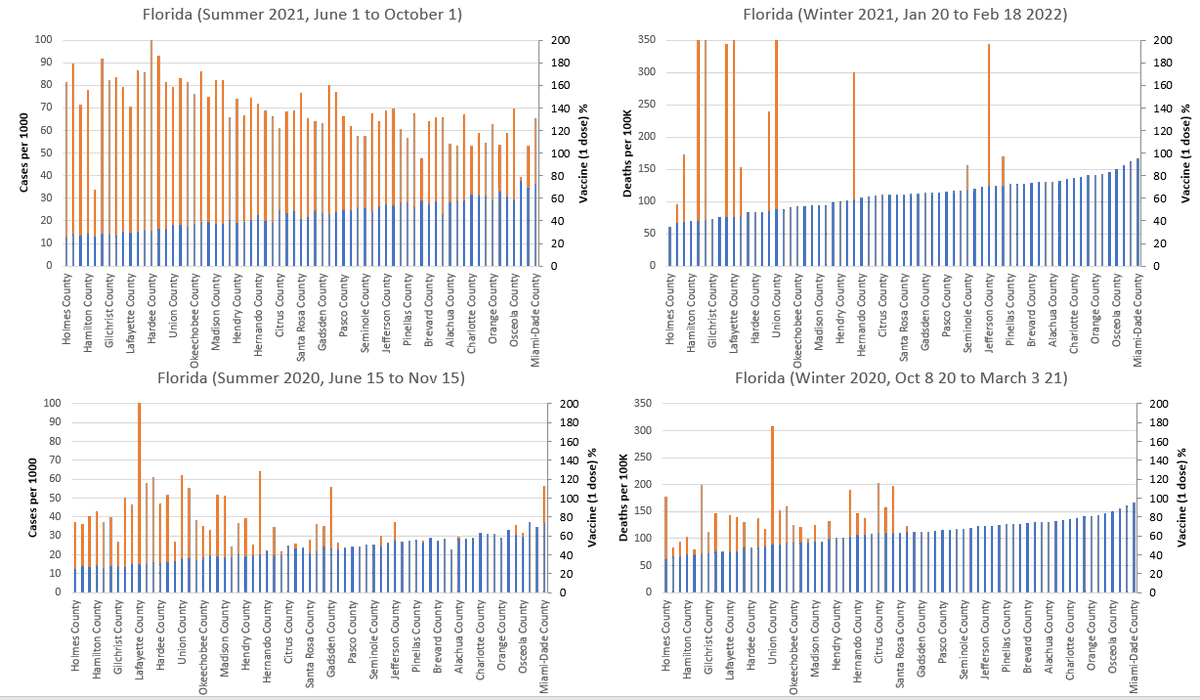
This is from #Florida. Left plots compare summer cases (2020 vs 2021) and right plots compare Winter deaths. The bottom row is without vaccination. The top row is with #vaccination. Counties are sorted from lowest (left) to highest (right) vax %. 

Excess deaths in Summer 2021 (with vaccine) in Florida were 75% higher than excess deaths in Summer 2020 (no vaccine).
https://twitter.com/mahmudme01/status/1488275460635213826
After removing vaccination data. Counties are sorted from lowest to highest vaccination rate (from left to right). It is very likely that vaccination causes (which helps in virus spreading) more deaths to unvaccinated people. 

CORRECTION- I made a mistake! This is the corrected death plot. Previously I made a mistake for the top-right plot. 

• • •
Missing some Tweet in this thread? You can try to
force a refresh












